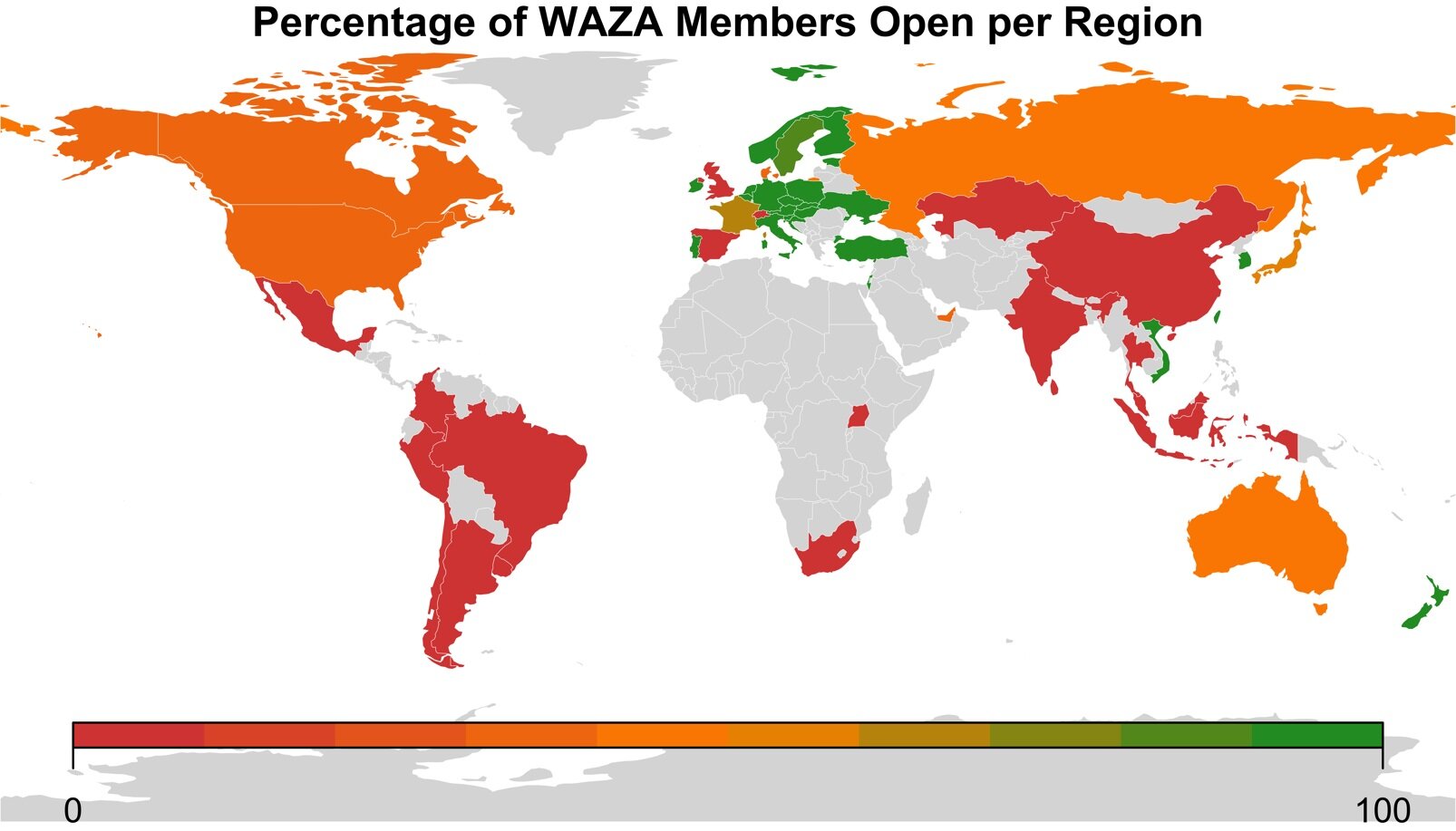Our community discussion during our first “Conservation Isn’t Closed” webinar was so powerful that we hosted a “Part Two” session to continue the focus on “New Tomorrow” issues in our post-COVID-19 zoo and aquarium world. We focused on identifying positive outcomes, which we termed “Zoom not Gloom.” Conservation remains a core mission of zoos and aquariums, and leadership needs to not only address the current financial crisis caused by closures, but also to envision our future in this new world.
International presenters set the tone for the 50+ zoo and aquarium professional participants:
-
Martin Zordan/WAZA reviewed the status of zoo and aquarium closures and openings worldwide, and thoughts for new ways to support conservation.
-
Simon Dowell/Chester Zoo shared the experience of BIAZA (the British and Irish Zoo and Aquarium Association) to convince their governments that zoos are not only about animal welfare (a core mission), but that education and conservation are also core missions.
-
Tommi Wolfe/GRACE (Gorilla Rehabilitation and Conservation Education) spoke about her organization’s experience with Ebola in the eastern Democratic Republic of the Congo and the need for flexibility and adaptability then and in the current situation.
Additional input was provided by:
-
Tim Tetzlaff/Naples Zoo on the importance of collaboration and highlighting specific models (e.g., the Madagascar Fauna and Flora Group and the Brazilian tapir project). It’s also time for new thinking—for example, Parque dos Aves in Brazil is creating a garden to grow their own food for guests.
-
Judy Mann/SAAMBR in South Africa and Jake Owens/Los Angeles Zoo discussed the importance of wildlife trade beyond simple bans.
-
Mike Kreeger/Columbus Zoo noted this is a good time to establish and/or reinforce local, regional, and national advocacy for conservation.
-
Jeffrey Vanek/Utah’s Hogle Zoo noted the importance of ensuring all staff and volunteers are part of the conservation plan and have “buy in.”
Finally, “takeaway” thoughts and quotes included:
-
Tommi Wolfe: Conservation does not have time on its side.
-
Simon Dowell: The situation in the UK right now is dire for zoos and aquariums (they have not been approved to re-open), but it is also an opportunity to inform legislators of the broad variety of zoo and aquarium missions, not only animal care and welfare, but conservation and education.
-
Keith Winsten/Brevard Zoo: The COVID-19 pandemic has changed the perception of nature; conservation can be part of that link.
-
Keith Winsten: Nature has shown resilience (e.g., photos of wildlife in the streets, but it was also noted by Jake Owens that we have to use caution of how that is interpreted).
There was consensus that current conservation needs are critical, but this situation can be hopeful if our community can identify new ways to address these needs. This is critical for conservation and for our own missions and futures, as zoos worldwide are the third largest funder of field conservation efforts.
Click here to watch the recording of the session and enter the password 0U&7cM?4.






